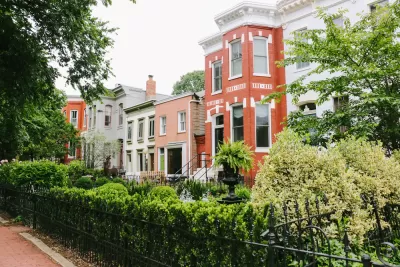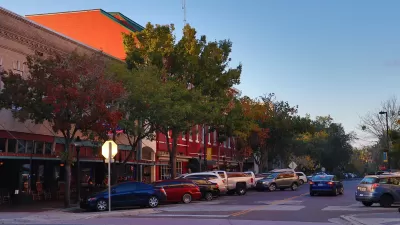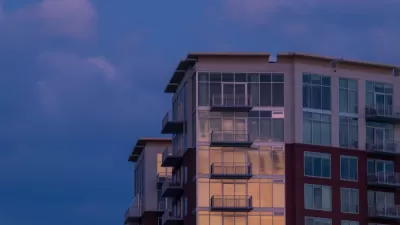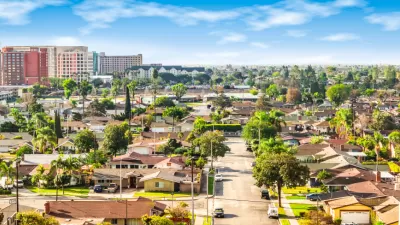Policies too narrowly focused on design can drive up the cost of construction and prevent the development of affordable housing.

Writing in Slate, Henry Grabar argues that the "battle between aesthetics and affordability" doesn't have to be a zero-sum game. "The promotion of good design in new buildings—distinct from the idea of preserving old ones—has become as much a local government objective as making sure every kid has a seat in school. Older American cities and suburbs are blanketed with zoning codes, historic districts, and design commissions that make sure communities that look nice stay looking nice."
But "a new wave of housing activists argues that this focus is a farce," a coy excuse to implement thinly veiled restrictive covenants that prevent socio-economic diversity and cause displacement of lower-income residents. "This status quo has preserved the shape of older places, but not the kinds of people who once lived there." Since the Great Recession, "we built the fewest new homes per capita of any period since World War II." The focus of historic preservation, Grabar argues, "has shifted from protecting the old to policing the new." Yet "it’s deeply human to care about what our surroundings look like," and YIMBYs must balance their interests with those of preservationists.
Zoning codes present another hurdle to increased density and affordable design. To streamline permitting and encourage construction, some cities are implementing pre-approval programs. "Los Angeles has staged a design competition for pre-approved ADU plans," and Bryan, Texas hopes to "jump-start the construction of 'missing middle housing'" through a concept they're calling "pattern zoning," which lets property owners download and customize one of four designs—"permit included."
Today, cities across the country are reckoning with the legacy of exclusionary zoning policies as "a tool of racial and socioeconomic exclusion, a relic that must be dismantled." Many have reduced or eliminated single-family zoning requirements in favor of denser development that city leaders hope will ease the affordability crisis faced by many households.
FULL STORY: “Good Design” Is Making Bad Cities, but It Doesn’t Have To

Study: Maui’s Plan to Convert Vacation Rentals to Long-Term Housing Could Cause Nearly $1 Billion Economic Loss
The plan would reduce visitor accommodation by 25,% resulting in 1,900 jobs lost.

North Texas Transit Leaders Tout Benefits of TOD for Growing Region
At a summit focused on transit-oriented development, policymakers discussed how North Texas’ expanded light rail system can serve as a tool for economic growth.

Using Old Oil and Gas Wells for Green Energy Storage
Penn State researchers have found that repurposing abandoned oil and gas wells for geothermal-assisted compressed-air energy storage can boost efficiency, reduce environmental risks, and support clean energy and job transitions.

Santa Barbara Could Build Housing on County Land
County supervisors moved forward a proposal to build workforce housing on two county-owned parcels.

San Mateo Formally Opposes Freeway Project
The city council will send a letter to Caltrans urging the agency to reconsider a plan to expand the 101 through the city of San Mateo.

A Bronx Community Fights to Have its Voice Heard
After organizing and giving input for decades, the community around the Kingsbridge Armory might actually see it redeveloped — and they want to continue to have a say in how it goes.
Urban Design for Planners 1: Software Tools
This six-course series explores essential urban design concepts using open source software and equips planners with the tools they need to participate fully in the urban design process.
Planning for Universal Design
Learn the tools for implementing Universal Design in planning regulations.
Ascent Environmental
Borough of Carlisle
Institute for Housing and Urban Development Studies (IHS)
City of Grandview
Harvard GSD Executive Education
Toledo-Lucas County Plan Commissions
Salt Lake City
NYU Wagner Graduate School of Public Service





























